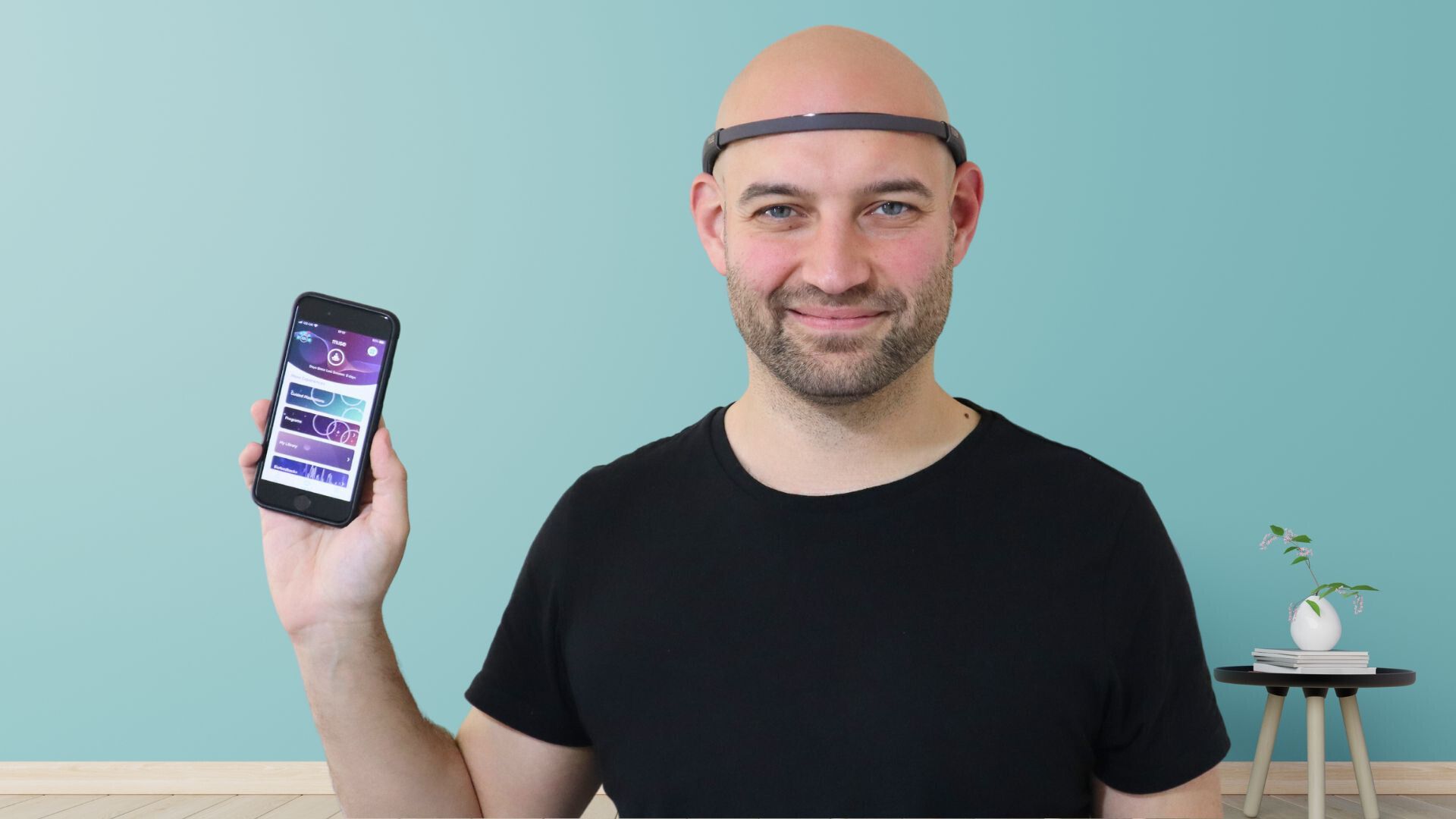The Muse 2 is a fascinating and unique piece of technology. It’s a wearable headband designed to improve your meditation practice. How does it accomplish such futuristic magic? By tracking your heart rate, posture, movements, and breathing through seven in-built sensors.
Until a few weeks ago, I never knew such technology existed for your average Joe. I had to try it for myself. I wanted to know if it was just a gimmick or a device that could revolutionise my meditations. Especially as I’m somebody who struggles to remain focused and engaged during my practice.
So, I bought Muse 2. Tried it, put it to the test, and wrote this comprehensive review. Why? To help others like you who want the full picture before deciding to buy it or not.
In this review, I’ll cover everything you need to know.
Including the design, comfort, functionality, value for money, and user experience. Most importantly, I’ll tell you what the biofeedback is like and if it can improve your meditations or not.
Sit back, relax, grab your favourite drink, and take this deep dive with me.
Ready?
Is the Muse 2 Well Built?
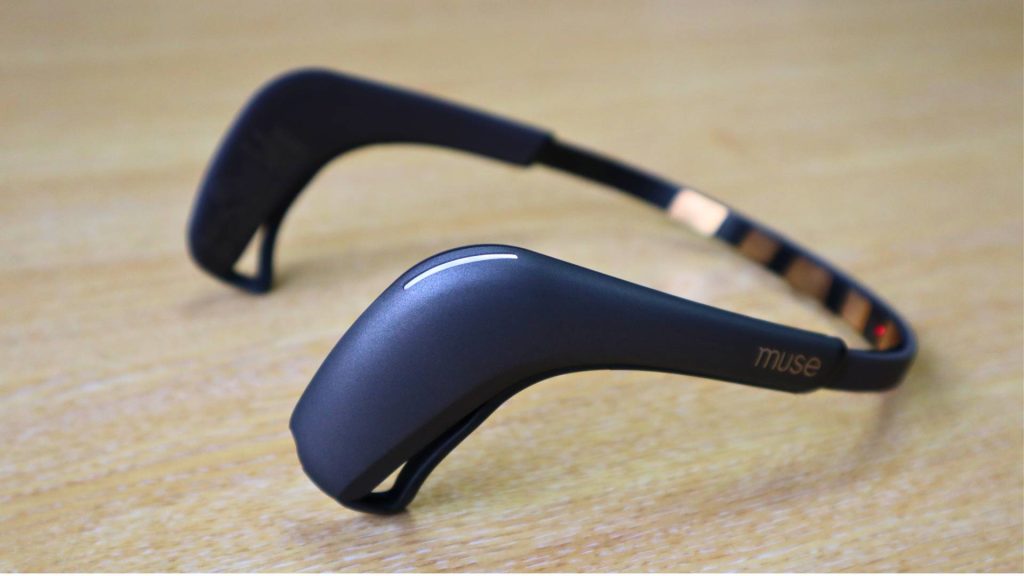
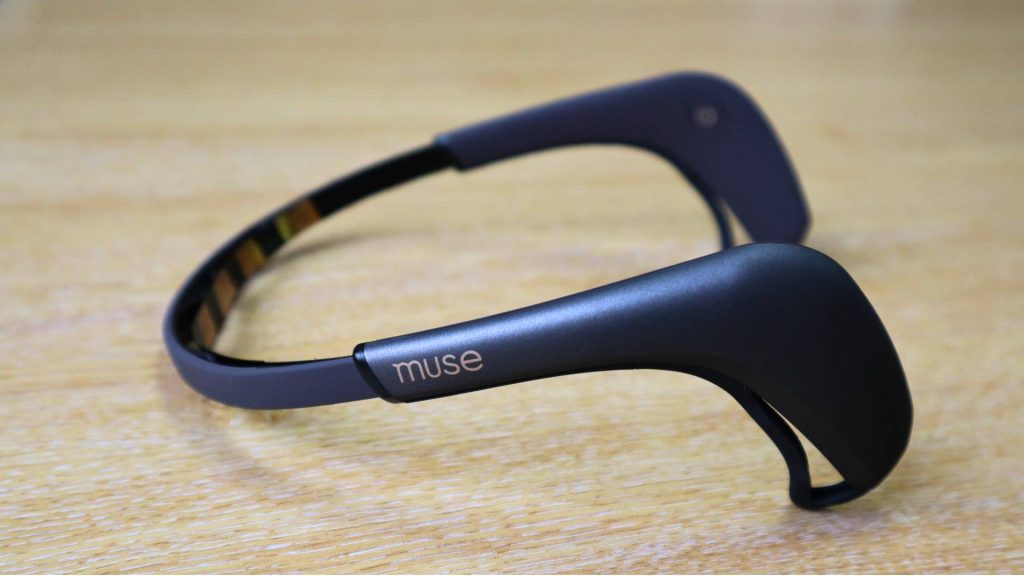
For a device that costs $250 (£230), the build quality is a little bit disappointing. It’s not bad, but I’d expect something more premium and robust for the price. Instead, it’s a little bit flimsy and appears to be made of standard rubbery plastic. This does feel nice to interact with though as it’s satin and smooth to touch.
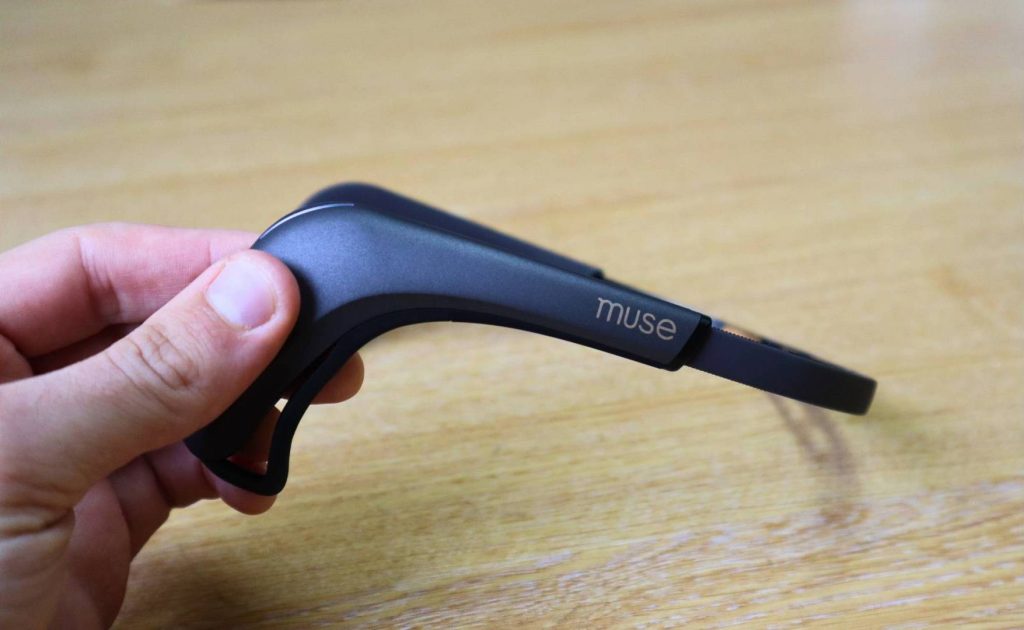
I imagine it would break easily if dropped but you can purchase a carrying case to keep it safe. But I think $40 is a bit steep in terms of price. Instead, consider buying a decent headphone case on Amazon for less than half the price.
The only downside of buying a headphone case is that the headband will move around inside it. That’s because the Muse 2 case is designed for the shape of the device. If you don’t plan to travel with the headband though, then I wouldn’t worry.
I’ll leave that up to you to decide.
Is the Muse 2 Comfortable to Wear?
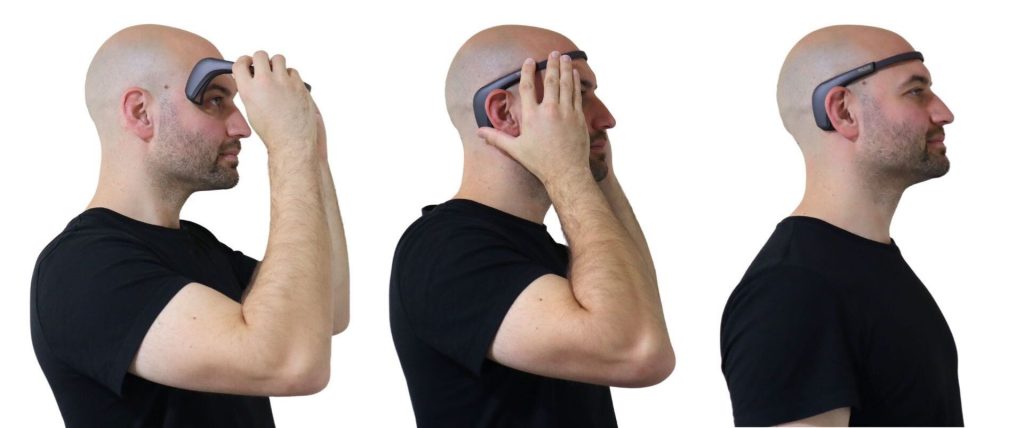
The Muse 2 is surprisingly comfortable to wear once you find the sweet spot on your forehead. Then you barely notice it’s there, especially when you’re engaged in your meditation. The exception to that is when you raise your eyebrows up and down, then you can feel it digging in a little.

But why would you be doing that? Well, you wouldn’t unless you’re The Rock, or me, who wanted to review it thoroughly.
You can adjust the size of the headband with ease, by extending the length of the ear supports. Ensuring that it can fit your head, no matter how large or small it is.
It’s worth mentioning that it’s also very light, which is a bonus. As you wouldn’t want to wear something heavy on your head.
What’s the Battery Life Like of the Muse 2?
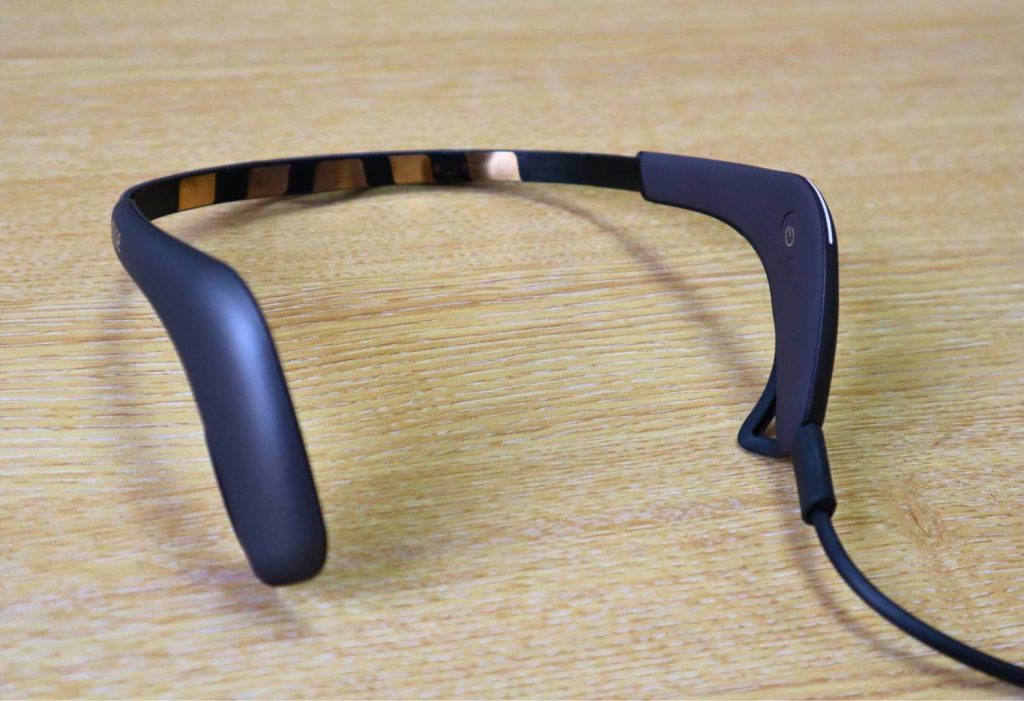
On Muse’s website, they say that the “battery delivers hours of continuous run time on a single charge.” That’s not very specific, but maybe that’s on purpose. If they claimed an 8-hour battery life that worsens over time, people would complain.
Smart move I guess, so kudos to them.
Let’s be honest though, I doubt most people using Muse 2 are going to be meditating with it for hours. So, it should be more than efficient for your needs. I’ve had no issues with the battery life or any problems charging it so far.
I’ll be sure to update this review though if that changes over the coming months.
How Well Does the Muse 2 Connect?
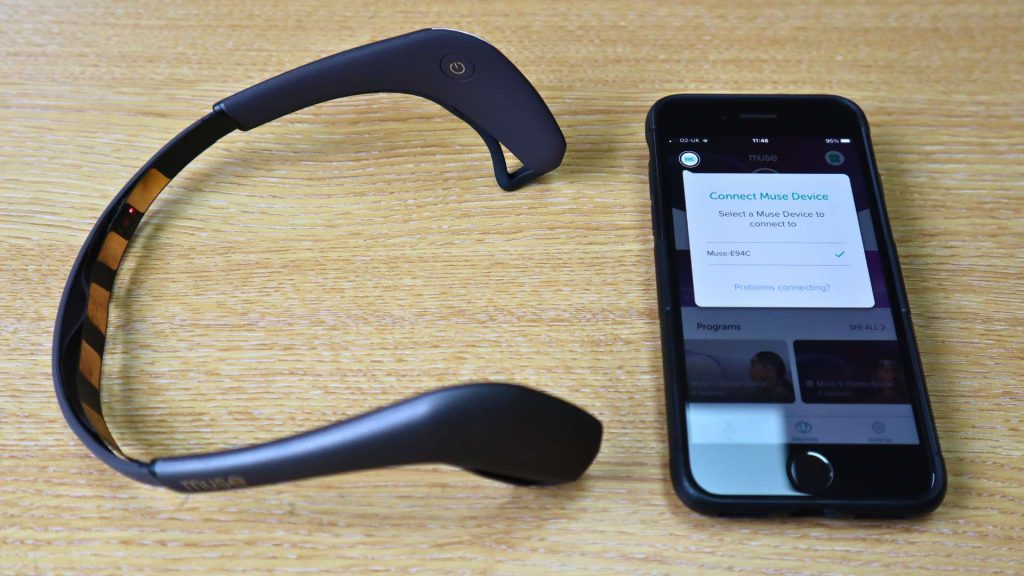
Before I bought the Muse 2, I read a lot of reviews. I encountered some who complained about connectivity issues, which had me worried. I even contacted the company on their website via their live chat, which is great by the way.
They’re always easy to contact. Plus, I’ve found them to be very helpful, knowledgeable, and friendly each time.
They said they were aware that some people had had connectivity issues. However, they informed me that the device comes with a 1-year warranty. So, they will replace it if you have any problems.
With that in mind, I happily purchased the Muse 2.
So, how well does it connect?
To be honest, it’s flawless. Every time I turn it on and enable Bluetooth on my phone, the app detects the device instantly. It then checks that the sensors are detecting my brain signals and off I go.

I know that one reason people had some issues was because of their hair getting in the way. Well, as you can see I have none. So, I guess being bald has its perks sometimes…
Even if you have long hair though, I’m sure you can get it to work fine. It may just take a bit of adjusting.
And in case you’re wondering, you can connect both your Muse 2 headband and Bluetooth earphones at the same time. How? The Muse 2 headband uses the app to wirelessly connect, whereas your earphones connect via your phone’s Bluetooth settings.
I was confused and curious about this before investing in Muse 2. So, thought it would be worth mentioning in case you are too.
How Easy is Muse 2 to Set Up?

I found the Muse 2 effortless to set up. On their app, there is a step-by-step video guide to follow. That includes how to turn it on, check the battery, connect it, fit the headband and sensor tips.
The starter guide also introduces the different meditation types to try. Such as the heart, body, and breath meditations. I thought this was a nice touch to present both the device and the practices. The guide was easy to follow, welcoming, and friendly, which gave a pleasant first impression.
How User-Friendly is Muse’s App?
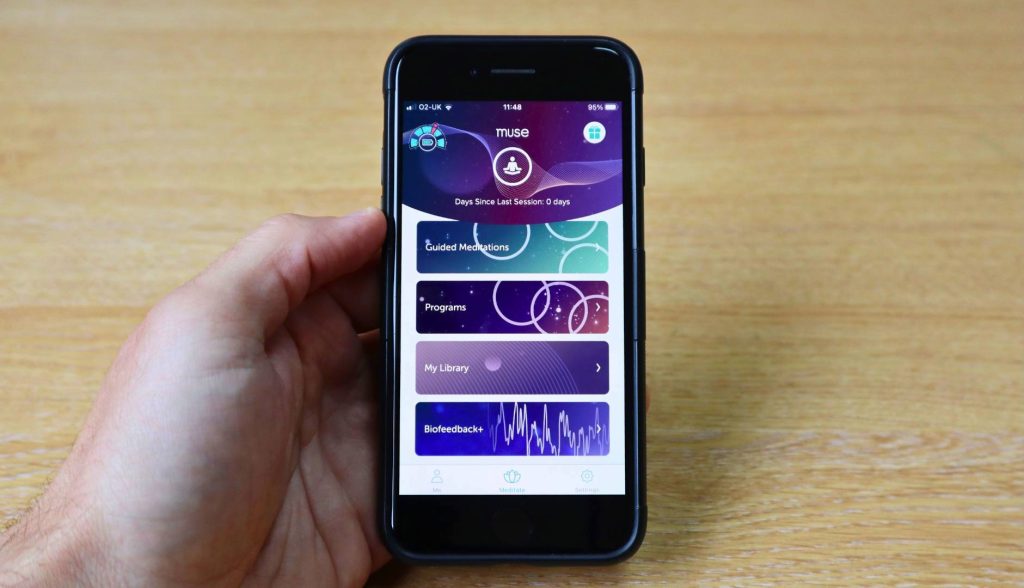
The app is simple and easy to navigate through. On the home page, you’ll find quick access to various meditations, programs, and featured practices. Along with a library of your recent sessions and downloads.
Enabling you to meditate even when you’re offline.
There is also a profile summary section, with all your session history, which you can view at any time. You can go through all of your previous meditations one by one if you like. This is handy as you can check how well you’ve been progressing.

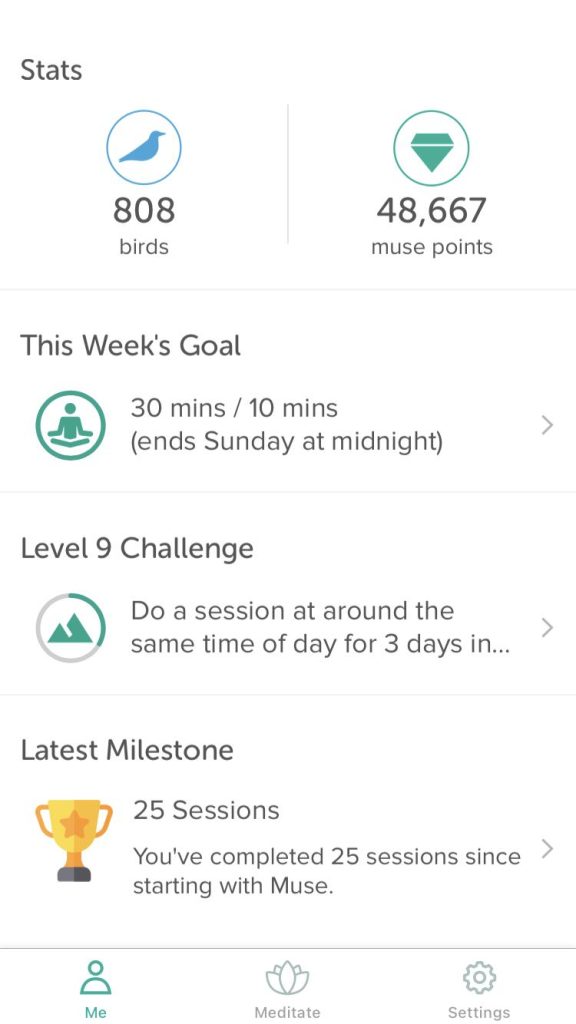
In this section, you can also see how many minutes you’ve meditated for. As well as stats, muse points, goals, challenges, and milestones.
Finally, there is a settings section. Here you can manage your account, change notification and system settings. In addition to being able to read FAQs and contact customer service.
What Are the Meditations in the App Like?
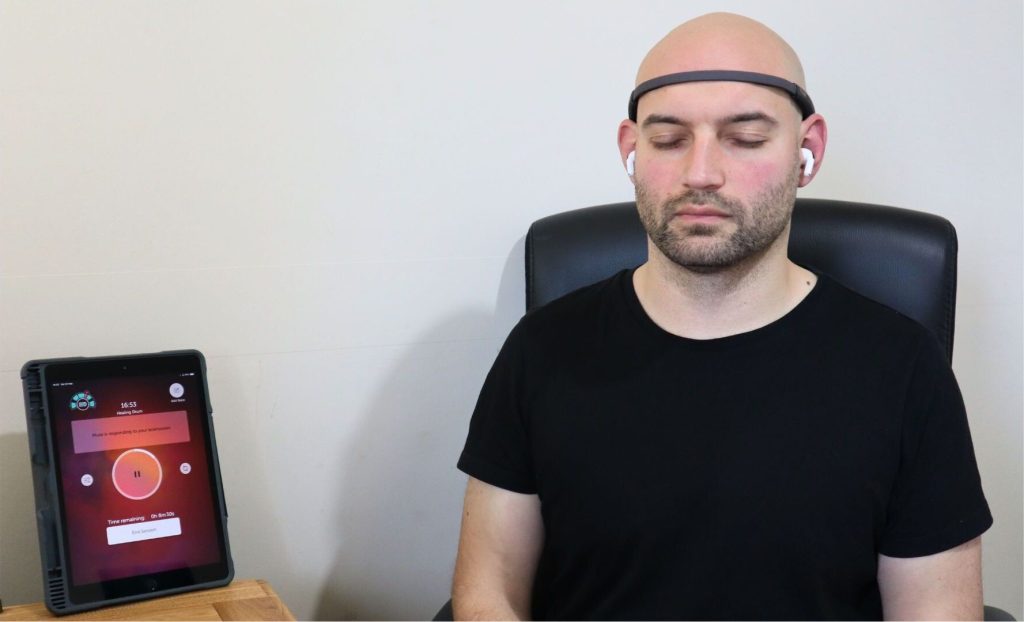
We’ve covered the basics, now for the exciting stuff. The meditations. In Muse’s app, there is a tonne of content to go through. You can find meditations and programs covering everything you could think of.
This includes categories such as well-being, health, happiness, compassion, mindfulness, and sleep. All the way to mindset, confidence, focus, performance, and neuroscience. You’ll also find specific meditations for people who are parents, students, veterans, and first responders.
There are even meditations for fertility, grief, life transitions, and cancer support. The list is endless. Needless to say, whatever it is you’re looking for, you’ll find it.
Have I been through everything? Not yet. That will take significant time as there are over 500, plus they release new content monthly.
Like all meditation guides, you’ll find ones you like and don’t like. It’s a personal thing. Voice tone, volume, and how the meditations are structured and paced all have an impact.
This applies to me too. I’ve enjoyed some, whereas others I didn’t resonate much with. Regardless, they are well put together by experts with adequate experience and knowledge.
The most intriguing and unique aspect of the Muse 2 is the biofeedback it provides.
Let’s look at that next.
Muse’s Biofeedback Meditations

Muse offers four different types of biofeedback meditations: Mind, Body, Heart, and Breath. But what do they all do?
Mind
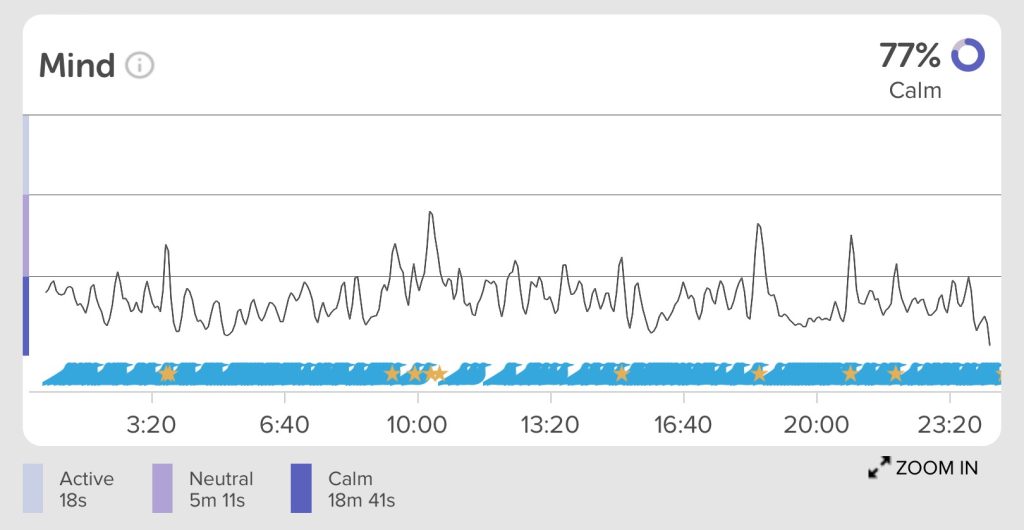
During the mind meditation, Muse 2 tracks your brain activity. Determining how present you were during the session. What’s incredible is that you know how active or calm your mind is according to the audio feedback.
There is a large range of soundscapes to choose from.
For example, a rainforest, windy desert, campfire, city park, beach, and ambient music. How do you know when your mind is calm? The ambient sounds like the wind and rain will soften, and you’ll begin to hear birds chirping sweetly.
Pretty cool, right?
At the end of your meditation, the app provides you with a graph displaying three categories: active, neutral, and calm. The final score is calculated as an overall calm percentage. You can see that during this meditation my score was 77%.
Body
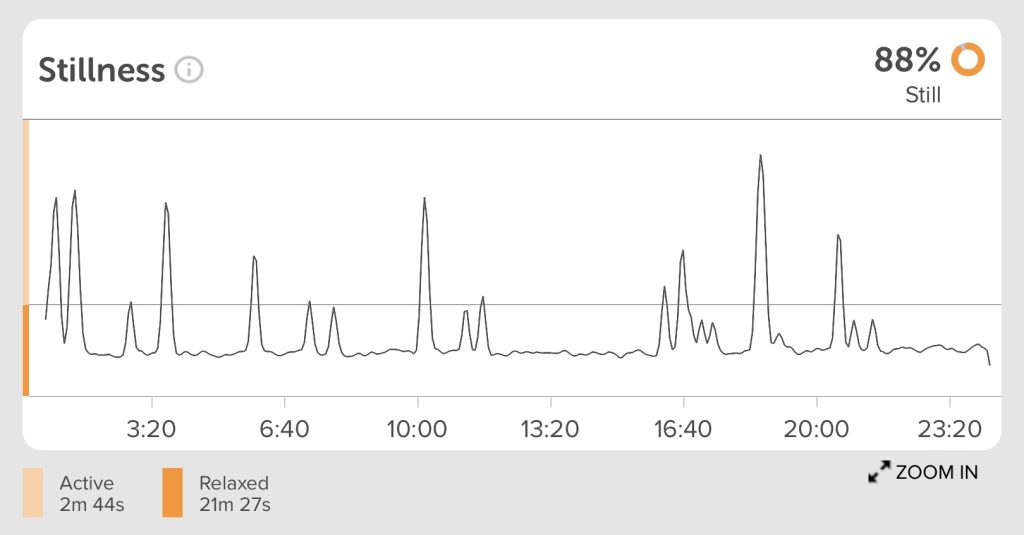
Muse 2 detects your movements and posture during the body meditation. This increases your awareness of how restless or still you are. Just like the mind meditations, there are various soundscape scenarios to choose from.
These range from windchimes to water droplets in a cave. The more you move, the more you’ll hear them.
At the end of your practice, you’ll see a graph that displays your movements. These range from active to relaxed. The Muse app presents your final score as a still percentage.
I’d like to see more soundscape options in the future though, as currently, there are only two.
Heart
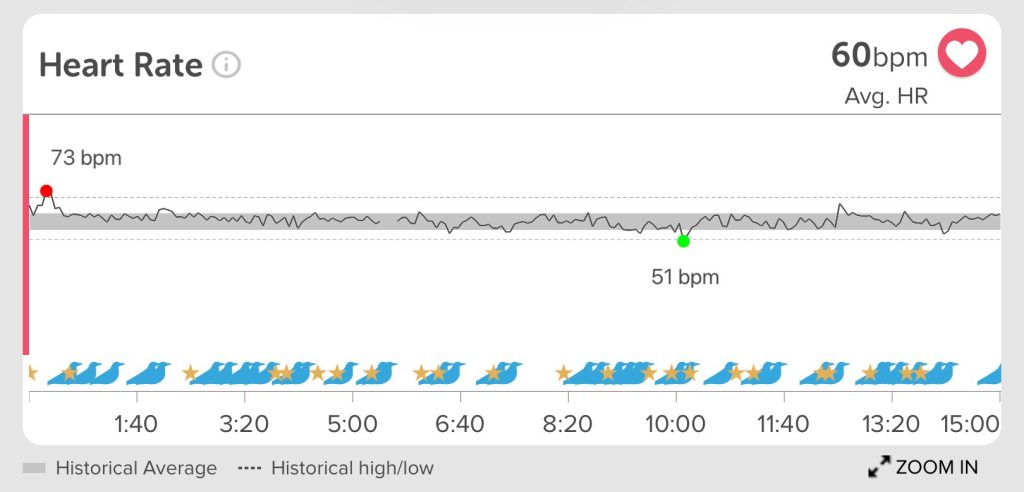
This is my favourite one. During the heart meditation, Muse 2 synchronises sounds to your heartbeat. In the app, there are two options to choose from: a rhythmic, soothing drum, and soft chirping crickets.
I find both to be therapeutic and relaxing.
The app displays your average heart rate at the end of your meditation. As well as the lowest and highest beats per minute recorded. If you tap the heart icon, it also tells you how long you spent under your average heart rate.
Breath
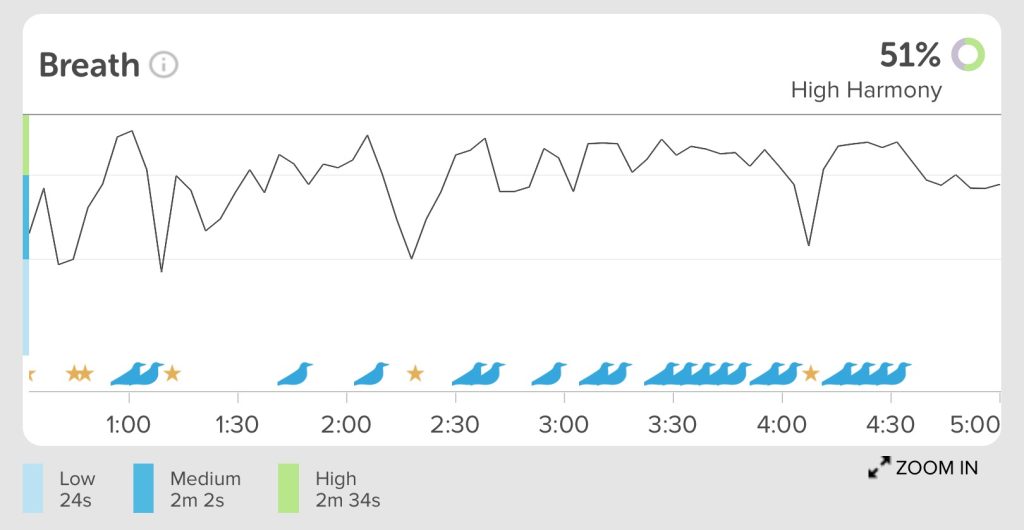
The breath meditation is there to harmonise your breathing. Helping it to be more stable and consistent. How does it work? To begin with, there is a guided voice telling you when to inhale and exhale.
As the voice fades away, you’ll hear musical notes and a metronome to keep you on track. This gently guides you to continue breathing at a steady rhythm. Allowing you to de-stress, relax, and build energy.
In the app, there are three variations to try out: box breathing, 4s-in 4s-out, and 4s-in 6s-out.
I prefer to do these meditations for shorter periods of time. Trying to control my breathing for 20 minutes can feel a bit tiresome, but perhaps I just need to work on it a bit more.
A Few Things to Note
One complaint I have about the Body, Heart, and Breath meditations, is there should be more options. For Body and Heart, there are only two soundscapes to choose from. And for Breath, there are only 3 techniques.
It’s disappointing that more breathing methods are not included. Or even longer breathing durations such as 5 or 6 seconds in and out. Especially as author James Nesbitt in his book Breath writes about how that is the “perfect” breathing time.
I have sent them this as feedback, so hopefully they will add more content in the future.
No matter, what meditation you choose, you get all the other feedback too. For example, if you choose a Heart meditation, you’ll also get the Mind and Body feedback. This applies to guided meditations too. You don’t receive Breath feedback though.
Why? Because the Breath meditation is unique and sets a rhythm to synchronise with.
As well as the data, Muse’s app gives you awards telling you what you did well. You also have the option to see how your current session compares to your previous averages. And you can add notes to each session.
This is beneficial, as you can note down how you felt, what went well, what didn’t, and so on. Which is something I encourage.
Is the Synchronised Audio Distracting?

Hearing sounds that respond to your mind, body, or heart takes getting used to. Depending on your personality, you will find the biofeedback meditations you prefer. As I mentioned earlier, the heart meditation is my favourite.
As I have a restless mind, I find the sounds from the mind meditation off-putting. For example, as I start to hear the stormy weather intensify, more thoughts arise. “Uh-oh, my meditation isn’t going well”, or “Oh no, I thought my mind was calm. How can I get it back on track?”.
This is only my personal experience though, I’m sure I will get more used to it over time.
If you find any of the audio distracting or intense, there’s a solution. In the app, you have complete control over the soundscapes. This means you can decrease or increase the volume of the individual sounds, which is what I do now.
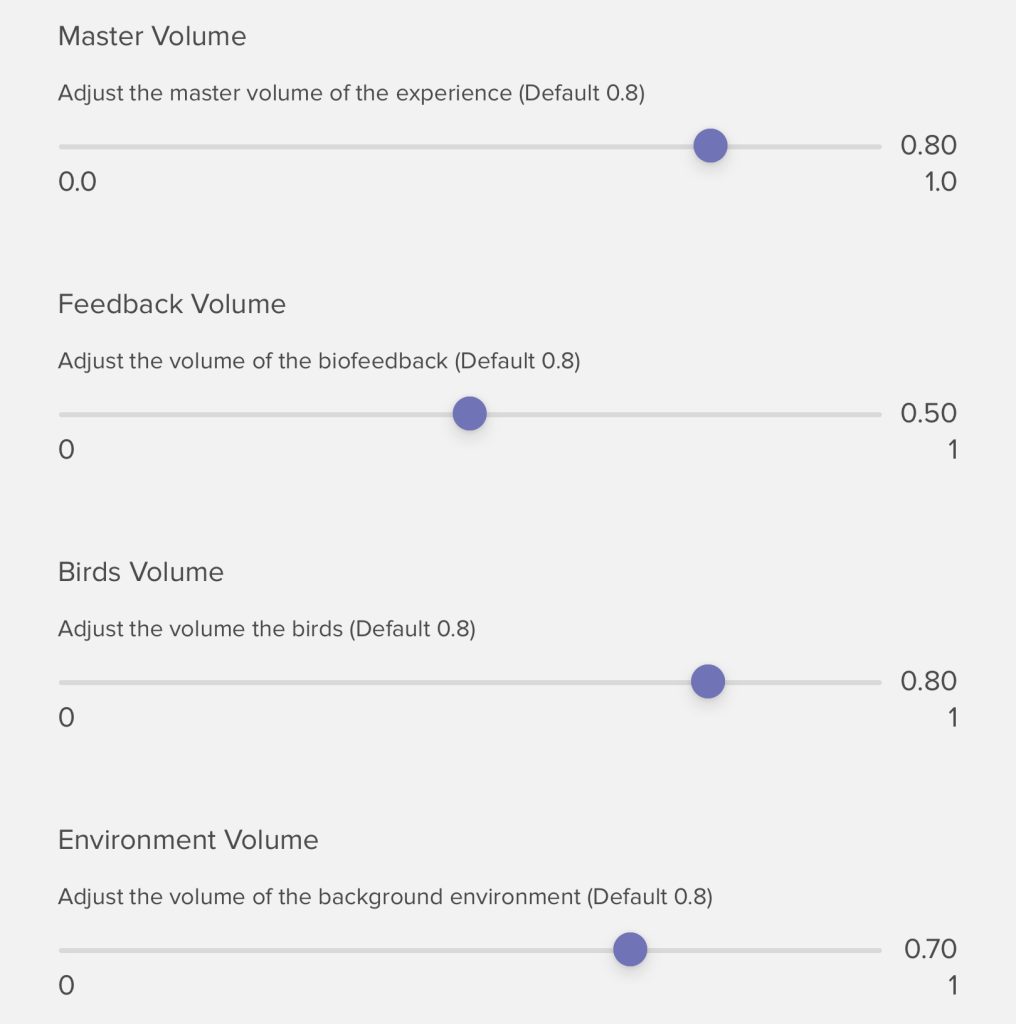
This does significantly reduce the intensity of active mind sounds.
Choosing to use an external or your phone’s speaker can also help. Earphones are more immersive but may be a bit too intense for some people. Again, it’s about your personal preference.
And of course, the biofeedback audio meditations are optional, you don’t have to do them. You can stick to the guided ones if you prefer.
How Useful is Muse’s Biofeedback?
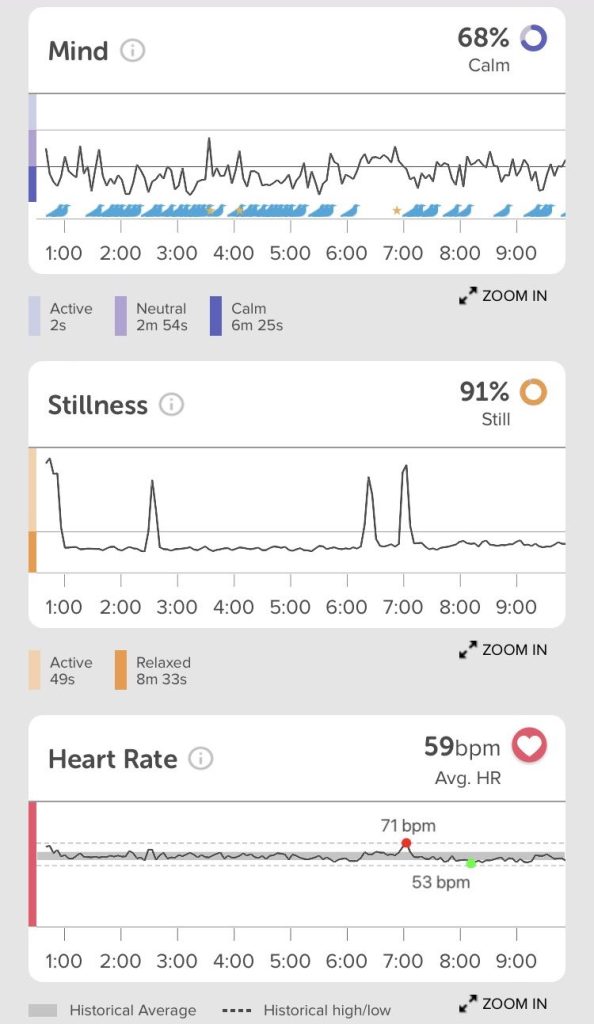
Muse’s biofeedback is incredibly useful for you to improve your meditation practice. Why? Steady breathing, having good posture, being still, and calm are essential meditation pillars. They are the foundations to build a solid practice.
Muse 2 empowers you to become more self-aware of all these aspects. Doing so in a fun and engaging way, which is what I love about it. These meditations “gamify” the practice, which makes it become addictive.
It’s hard not to want to do better each time. While it’s important not to obsess over that, let’s face it: meditation is challenging. That’s why I praise technology that makes it more captivating, interactive, and immersive.
Over the past few weeks, I’ve increased my calm score by over 20%. Hopefully, it’s only up from here.
You can also sync Muse 2 with other music, audiobook, podcast and mediation apps. That means you can get biofeedback whilst listening to your favourite song, book, podcast, or meditating using another app.
This means you can receive biofeedback while enjoying your favourite song, book, or podcast, or while using another meditation app.
But what about the science behind Muse 2, is there any evidence to support it’s effectiveness?
Does the Muse 2 Actually Work?
The Muse 2 headband measures your brain waves, heart rate, and blood circulation via 7 sensors. And yes it is backed up by scientific research. In one study, independent researcher Dr. Olav Krisolson and his peers compared the Muse 2 to a $80,000 EEG device.
They found that Muse 2 stood up well against the ActiChamp. In addition, it took far less time to set up and only required one assistant.
Browse through Muse’s website and you’ll find numerous research papers to read.
They also have a medical advisory board made up of medical professionals, neuroscientists, and psychiatrists. It’s clear to see that they take the science behind Muse seriously. And that’s what you want.
In addition, third parties including NASA, Yale, Harvard, the Massachusetts Institute of Technology, and IBM have conducted their own Muse research.
Below, you can find a short clip, where Gordon Binsted used Muse to measure the brain activity of Tibetan monks.
So, yes, rest assured. If large organisations such as NASA are experimenting with Muse, then it’s fair to say that it does work.
Does the Muse 2 Show Brain Waves?
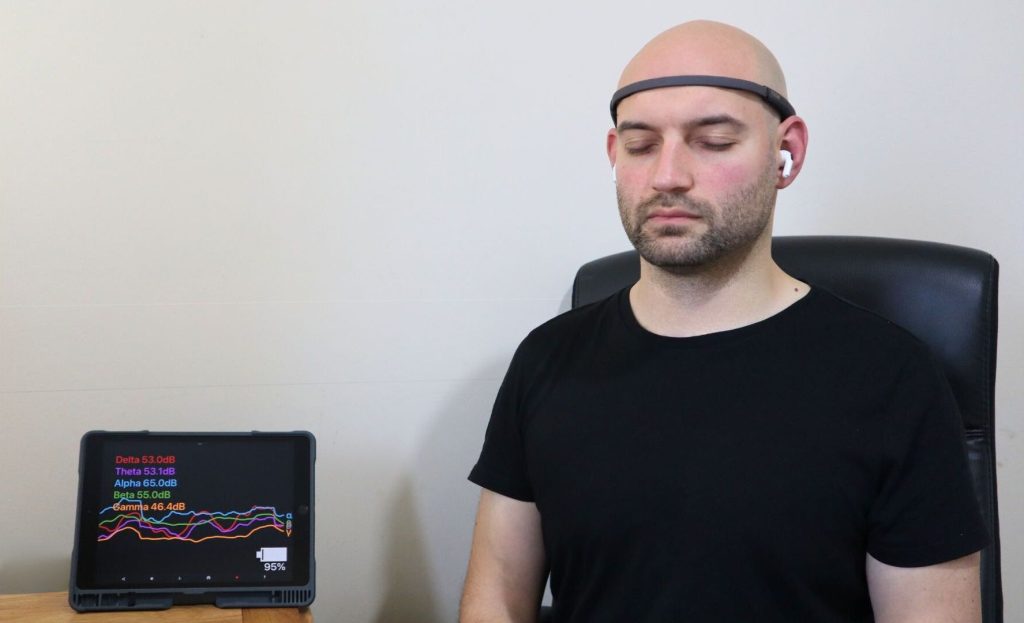
Muse 2 does not show brain waves. Instead, it presents your brain activity in a graph. Displaying data between active, neutral, and calm. However, if you want to see your brain waves when meditating, you can use an app called Mind Monitor.
This seamlessly connects to Muse 2.
I’ve used this from time to time, but brain waves are complicated to understand and read. Keep this in mind if that’s the kind of data you’re interested in observing. I quickly came to that realisation myself when I fell down that rabbit hole.
Now I stick to the simple way that Muse’s app displays your brain activity. It’s much more user-friendly and easier to understand. I suppose that’s why they developed it in this way.
I do plan to dive deeper into the science of brain waves, but for now, I’m happy to stick to Muse’s app. I’d recommend that you do the same.
How Much is Muse 2 and the App Subscription?
Okay, now on to one of the most important deciding factors, the price. The Muse 2 headband costs $249.99 from their website. Or if you live in the UK (like me) it’s around £230. For Europeans, the price is set at €269.99.
Is that expensive? In my honest opinion, no it’s not.
Why? You’re investing in technology to benefit your well-being. One that will help you to cultivate more self-awareness and enhance your meditations.
For me, that’s worth it.
I don’t compromise when it comes to my health, happiness, and well-being. And the Muse 2 fits into those categories, along with eating better foods, a gym membership, and so on.
Now, the app is not free, it’s paid on a subscription basis. For the USA, it costs $12.99 a month, or $49.99 per year. For the UK/Europe, it’s £11.99 (€13.99) a month, or £35.99 (€39.99) per year.
I feel the yearly prices are more than fair. Think of it like this, how much would you pay for a meditation retreat, classes, or teacher?
That’s not to say they don’t hold their own value. But with Muse’s app, you get 500+ meditations, with new content released each month.
Can You Use Muse 2 without a Subscription?
You can use Muse 2 without a subscription, but it means you will have fewer options available on the app. However, Muse offers a free 7-day trial, so why not try it out for yourself first? Then you can know if it’s worth it or not.
Is the Muse 2 Right for You?
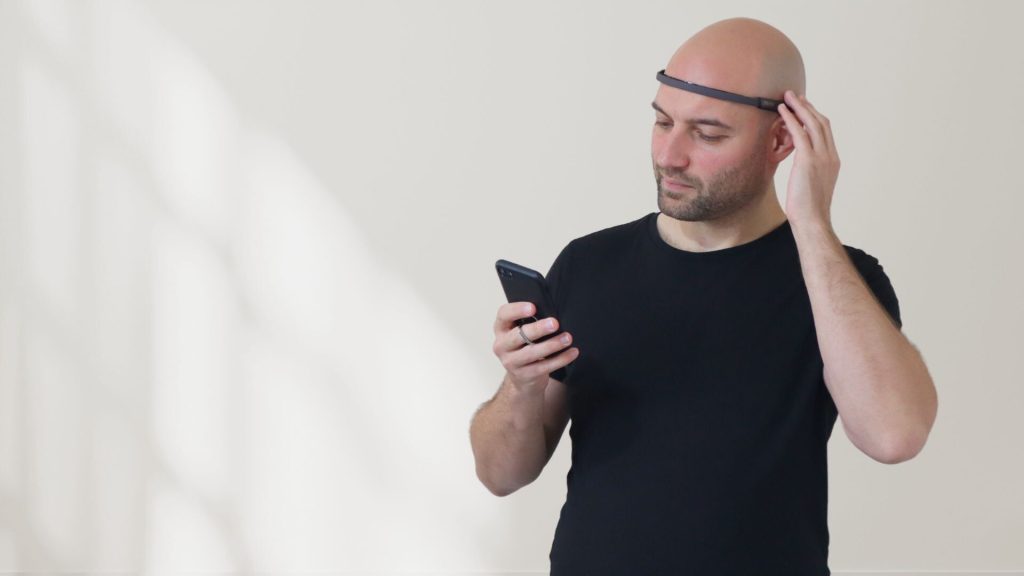
Meditating with a headband tracking your brain and body will not be for everybody. It’s a personal preference. I think the Muse 2 will benefit you if:
- You’re a beginner who needs a helping hand getting started meditating
- You’re an experienced meditator looking to change things up
- You want to make meditation more fun and engaging
- You’re interested in knowing how well you meditate by looking at the data
- Your curious about what your mind, body, and heart are doing during your practice
- You want to develop more self-awareness
- You’re looking to track, improve, and deepen your meditation
- You like to test and experiment with new wearable tech for self-development
Who is Muse 2 not right for?
If you like to keep things simple and basic, then wearable tech may not be for you. Or if you’re somebody who will overthink, get annoyed, and be frustrated at the data, then Muse 2 could be a hindrance.
Although I would argue, this is something you can work on.
That’s coming from a perfectionist who always strives to do better. Meditation is not about perfection though. Even experienced meditators can struggle to calm their minds.
Please remember that, whether you purchase the Muse 2 or not.
My Final Verdict: Is the Muse 2 Worth it?
| My Rating: 4.5 out of 5.0 stars |
| Pros +User-friendly and easy to use +Makes mediation fun and engaging +Biofeedback is unique and interactive +Data seems accurate +Develops self-awareness +Helps you to improve your meditations +Responsive customer care |
| Cons –Lacks content for some biofeedback meditations –Headset isn’t very robust –Biofeedback may be off-putting for some |
We live in an incredible time right now. One where science is catching up to ancient practices like mindfulness and meditation. Demonstrating the evidence of how it benefits us. In the past, such studies required lab settings and professional medical equipment.
But things are changing.
Now we have access to wearable home EEG devices like Muse 2. When I discovered that, I had to try the device out for myself.
Am I glad that I made the purchase? Yes, absolutely.
Muse 2 has empowered me to understand what’s going on within my mind, body, and heart better. The biofeedback shows me what areas I could improve, and I have already seen some positive changes. In that sense alone, it’s worth it.
I’m just beginning to scratch the surface and have a lot to learn. So, I’m excited to keep spending time with the device.
Although this kind of technology is still new, it’s already groundbreaking. And no doubt, it will continue to develop and improve over time.
You don’t need Muse 2 to learn to meditate by any means. And even if you buy it, I’d encourage you to meditate without it from time to time. But to me, this blend of meditation and modern-day science is invaluable.
Muse offers a 30-day return period.
So, why not try it for yourself? What do you have to lose?
Take care of yourselves,
Chris from Mindful Way to Be
